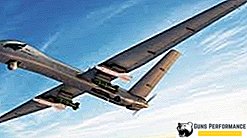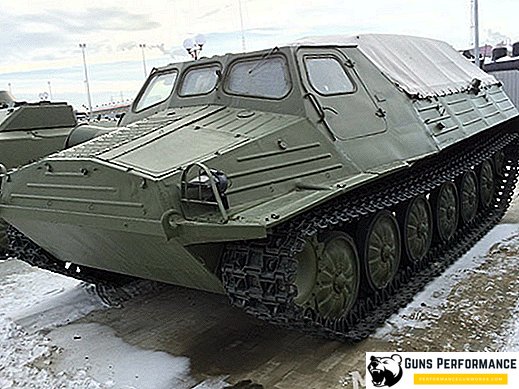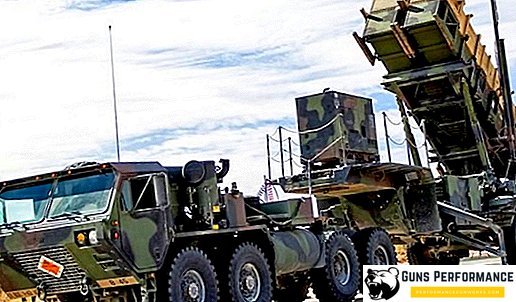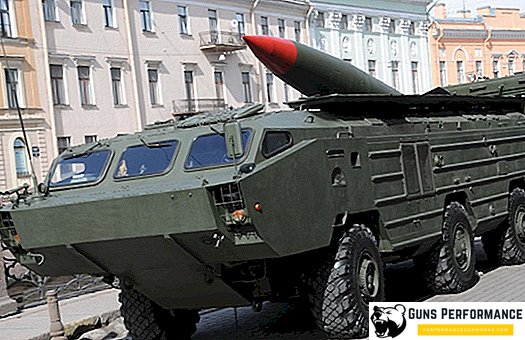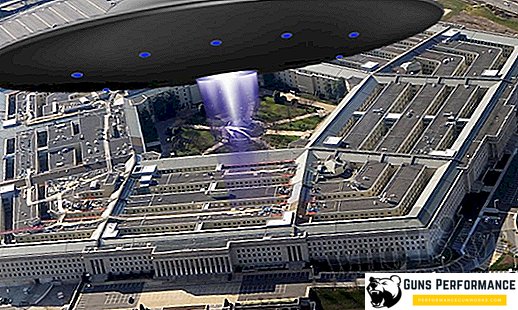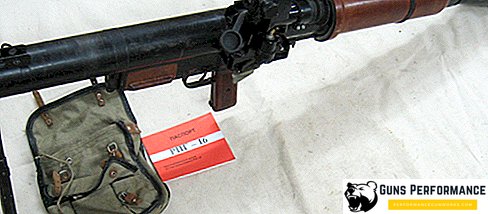
The RPG-16 "Strike" is a Soviet anti-tank grenade launcher, which was developed specifically for the Airborne Forces in the late 60s. It was adopted in 1970. Outwardly, this weapon strongly resembles another famous Soviet hand grenade launcher - the RPG-7. However, unlike the latter, the RPG-16 could use only one type of ammunition - the PG-16V cumulative caliber grenade.
History of the RPG-16
For most of its history, the Soviet Union had the largest and strongest airborne troops in the world. The paratroopers were always considered the elite of the armed forces, they were selected the best, great attention was paid to equipping airborne units. For the paratroopers developed special weapons and military equipment, the design of which took into account the specificity of the use of these parts.
At the end of the 60s, the development of a new anti-tank grenade launcher began specifically for the Soviet Airborne Forces, it was carried out by a team of designers under the leadership of I. Rogozin. The main purpose of the new weapons was to defeat enemy tanks and other armored vehicles, as well as enemy manpower in shelters or various fortifications. The grenade launcher was put into service in 1970 and received the designation RPG-16 "Strike".

Despite the strong external similarity with the RPG-7, the designs of these two grenade launchers differed significantly. Although, in fact, the RPG-16 was a further development of the RPG-7.
The grenade launcher was originally developed taking into account the specifics of the use of airborne troops. He had a collapsible barrel of a larger caliber than the RPG-7 and a caliber, and not an over-caliber grenade. In the traveling position, the weapon was disassembled in two parts and worn in one bag. When landing, the grenade launcher jumped with the disassembled RPG-16 and two shots to it, and the second calculation number had three additional shots to the weapon. The PG-16V grenade had a powerful engine, thanks to which a greater range of weapons was fired than the RPG-7, and its accuracy was increased.

The RPG-16 was actively used in Afghanistan, the Soviet fighters loved these weapons for their good accuracy and considerable grenade range. Although, I must admit that the RPG-16 was used for other purposes: the Mujahideen did not have armored vehicles, so the grenade launcher was used to suppress the enemy’s firing points. In Afghanistan, the RPG-16 was used not only by paratroopers, but also by special units. Later, a grenade launcher was used in various local wars that arose on the territory of the former Soviet Union.
In general, if we talk about the combat effectiveness of the RPG-16 grenade launcher, we can note the following. At the time of its creation, it was a very effective weapon, compact, accurate, with excellent firing range. The distance of the aimed shot at the target with a height of two meters was 520 meters. In the RPG-7, this figure was much more modest - only 330 meters. The main and only purpose for a grenade launcher were enemy tanks. Initially, the RPG-16 was not inferior in the armor penetration capability of the RPG-7 grenade launcher (in both types of weapons it was 300 mm), but it was much superior to its range of fire and its accuracy. The problem was that the protection of tanks was growing rapidly, and it was already impossible to increase the power of the RPG-16 caliber grenade. Already in the mid-70s, she did not suit the Soviet military.

To increase the armor penetration of the RPG-7, one could simply increase the size of the above-caliber warhead of a grenade. In 1977, for this grenade launcher, a new PG-7L ammunition (93 mm warhead caliber) was manufactured, which could penetrate 500 mm of tank armor.
This situation led to the fact that already in the early 80s, the RPG-7D grenade launchers began to return to the armament of the Airborne Forces. To date, the RPG-16 has long been outdated, it can only be used to combat the enemy's light armored vehicles or their firing points.
Description of the design of the RPG-16 grenade launcher
RPG-16 refers to the second-generation grenade launchers, which means not only the presence of a starting powder charge, but also its own jet engine of a grenade.

RPG-16 grenade launcher weapon consists of the following components:
- trunk;
- trigger mechanism;
- stop-contact mechanism;
- sights.
The barrel of the grenade launcher is detachable, it includes a pipe, as well as a chamber with a socket. The pipe is connected to the pipe with a rusk joint, the junction is fixed with a special sleeve, and gas breakthrough is prevented by the obturator.
On top of the pipe are mechanical sights, consisting of a sight and a front sight. To the left of them is a bracket for installing an optical sight. The chamber is covered with lining on top, here is a tube with a wire and a stopper-contact mechanism. In the front of the weapon barrel mounted bipod.
The trigger mechanism includes an induction generator, a cock lever, a plunger, a fuse and a trigger.
The PG-16 reactive cumulative grenade has a piezoelectric fuse and a starting powder engine. By its construction, the PG-16 resembles a PG-7 grenade; it has a single-jet jet engine and six folding stabilizer feathers, as well as two tracer.
Before use, the starting charge is connected to the grenade, after which the protective cap is removed from the head of the fuse.

The stopper-contact mechanism holds the shot inside the barrel of the grenade launcher and transmits a pulse from the generator to the electric start pilot charge. By moving the platoon lever down, the grenade thrower generates a pulse sufficient to trigger the igniter. After pressing the trigger, it is transmitted to the electric igniter, which ignites the charge of black powder, and through it the entire starting charge.
After the departure of a grenade, its stabilizers are opened, and then the main engine of the munition is turned on. The fuse gets up on a combat platoon at a distance of 3-20 meters from the muzzle of the weapon. Stabilization of a grenade in flight is due to its rotation, as well as the feathers of the stabilizer.
The RPG-16 is equipped with a PGO-16 optical sight with a magnification of 2.7. The mechanical sight bar has a scale from 200 to 800 meters with a step of 100 meters. When the temperature is above zero, aiming is carried out along the front sight. If it falls below zero, then the front sight leans and serves as a guide as a ledge on its base.
Characteristics of the RPG-16
Below are the main characteristics of the RPG-16:
- weapon weight, kg - 10.3;
- sighting range, m - 800;
- direct shot, m - 520;
- practical rate of fire, shots / min - 5-6;
- calculation, people - 2.


